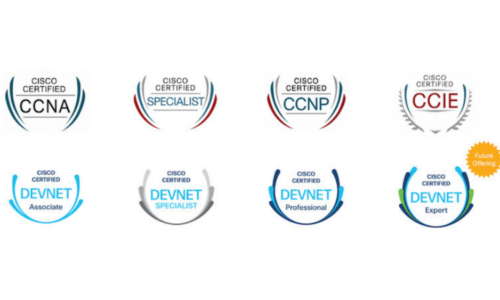Every student should be exposed to computer science. In today’s technology-driven world, helping kids learn to code is becoming increasingly important for future career success. However, not all students are given equal access to a quality computer science education.
Marginalized groups, including girls, underrepresented minorities, and students from low-income backgrounds, often face barriers that prevent them from pursuing and excelling in this field. To address this disparity, it is crucial to take proactive steps toward improving equity in computer science education.
By providing more opportunities for marginalized groups and fostering their unique perspectives, we can create a more inclusive and diverse STEM industry.
Here’s what you can do to make computer science education more equitable in your school or district.
1. Expand Access and Exposure
One of the key ways to promote equity in computer science is by ensuring that all students have access to coding education. This means providing opportunities for kids to learn to code from an early age.
Integrate computer science into the curriculum starting at the elementary level and offer coding clubs or after-school programs. By exposing students to coding early on, we can spark their interest and help them develop the foundational skills necessary for future success.
2. Professional Development for Teachers

To effectively teach computer science, educators themselves need to be equipped with the necessary knowledge and skills. Offer professional development programs for teachers to enhance their understanding of coding and other computer science concepts.
This will enable them to deliver high-quality instruction and provide support to students from diverse backgrounds.
Additionally, consider partnering with local universities or industry professionals to provide ongoing training and mentorship opportunities for teachers.
3. Foster a Supportive Environment
Creating an inclusive and supportive environment is crucial for promoting equity in computer science. Encourage collaboration and teamwork among students to build a sense of community.
Establish mentorship programs where experienced students or industry professionals can support and guide those who are just starting their coding journey.
By fostering an environment where everyone feels valued and supported, we can empower students from marginalized groups to pursue computer science with confidence.
4. Address Gender Disparity
Gender disparity is a persistent issue in the field of computer science. Girls often face cultural and societal barriers that discourage them from pursuing STEM education. To address this, it is important to actively promote and support female participation in computer science.
Organize girls-only coding clubs or events to create a safe space where girls can explore and develop their coding skills.
Additionally, showcase female role models in the industry and highlight their contributions to inspire and encourage young girls to pursue computer science.
5. Provide Scholarships and Financial Assistance

Financial barriers can significantly limit access to quality computer science education, particularly for students from low-income backgrounds. To overcome this, consider offering scholarships or financial assistance programs specifically for students interested in pursuing computer science.
Partner with local organizations, businesses, and universities to secure funding for these initiatives. By removing financial barriers, we can ensure that all students, regardless of their socioeconomic background, have equal opportunities to learn and excel in computer science.
6. Developing Mentorship Programs for Minorities
Mentorship programs play a crucial role in supporting underrepresented individuals in the field of computer science. By establishing mentorship initiatives specifically designed for minorities, we can provide invaluable guidance, support, and encouragement to aspiring CS professionals.
These programs can pair experienced mentors from diverse backgrounds with mentees who are underrepresented in the field. Mentors can offer advice on career paths, provide insights into navigating challenges, and serve as role models for success. This one-on-one relationship allows mentees to gain knowledge and skills, develop confidence, and build networks within the industry.
Mentorship programs should also emphasize the importance of diversity and inclusion, helping mentees understand the unique perspectives they bring to the field and empowering them to overcome barriers.
7. Partnering with Industries and Offering Internships/Job Opportunities for Underrepresented Groups
Collaboration between educational institutions and industry is crucial in improving equity in computer science. By forging partnerships, we can create more internship and job opportunities for underrepresented groups.
Industry involvement provides students with practical experience, exposure to real-world challenges, and opportunities to develop critical skills. It also helps bridge the gap between academia and industry, ensuring that the curriculum remains relevant and inclusive. To promote equity, it is essential to establish internships and job placements that specifically target underrepresented groups.
Companies can actively engage in outreach efforts to attract diverse candidates, create inclusive application processes, and provide mentorship and support during internships and employment. Furthermore, these partnerships can facilitate the exchange of knowledge, resources, and best practices, enabling educational institutions to adapt and align their programs with industry needs.
8. Creating Supportive and Inclusive Learning Environments

Building supportive and inclusive learning environments is essential for improving equity in computer science. By fostering a sense of belonging and creating spaces where all individuals feel valued and respected, we can address barriers and promote diversity in the field.
There are several key strategies to achieve this. Educational institutions should prioritize diversity and inclusion in their policies and practices. This includes developing clear guidelines against discrimination, fostering a culture of acceptance, and actively promoting diversity in recruitment and admissions processes.
Curricula should be reviewed and modified to incorporate diverse perspectives and experiences. By including case studies, examples, and projects that reflect the diversity of the student body, we can ensure that everyone feels represented and engaged.
Final Words
By implementing these strategies, we can take significant steps toward improving equity in computer science education.
It is crucial to provide every student with the opportunity to learn how to code and ensure that marginalized groups are not left behind. By expanding access and exposure, providing professional development for teachers, fostering a supportive environment, addressing gender disparity, and offering financial assistance, we can create a more inclusive and diverse STEM industry.
In conclusion, computer science education should be equitable for all students. It is our responsibility to bridge the gaps and provide equal opportunities for marginalized groups. By implementing the ways to improve equity in computer science mentioned above, we can empower students from all backgrounds to excel in this field.
Let’s work together to create a future where every student can learn to code and contribute their unique perspectives to the world of STEM.




